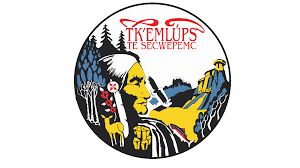
This socio-economic, cultural and well-being impact study examines the potential positive and negative well-being impacts to the Secwempc Nation in central British Columba of the proposed expansion of the Highland Valley Copper Mine. The study was conducted with Carol Anne Hilton of the Indigenomics Institute.
This report builds upon on the foundational concept of the integral nature of place and Secwempc identity. It is at this intersection of culture, social, economic and ecological uses that this report aims to locate the development and relationship of the proposed mine to the Secwempc peoples continued existence and responsibility over time.
This cultural heritage study exists within the tensions of today’s experience of economic and ‘progress and development.’ The last 150 plus years has been an accumulation of the effects of the collision of the experience of the oncoming economic pursuit of monetary gain and resource extraction and the derogation of Sewempc sense of inherent responsibility and identity. This SSN Culture Heritage Study (CHS) is centered within this experience.
The United Nations Declaration on the Rights of Indigenous Peoples is a key international instrument that outlines the foundation of the right to continue as peoples. Article 3 recognizes Indigenous peoples’ right to self-determination, which includes the right “to freely determine their political status and freely pursue their economic, social and cultural development.”
Through this proposed project within the SSN territory, the Sewempc people are exercising this right to self-determination, including the right “to freely determine our political status and freely pursue our economic, social and cultural development.” Moreover, the Sewempc people are exercising the right to economic inclusion that should contribute to improving the conditions of the economic, social and cultural well-being.
In authoring this report, both authors bring specific insight into Indigenous economies, well-being metrics and economic design. Through the lens of the development of Indigenous economies, the SSN worldview provides significant insight into this culture heritage study.
It is a foundational concept to SSN governance and business that the onus of any economic development initiative or project, like the Highland Valley Copper mine, must demonstrate impact or return on investment to the Sewempc people that is in harmony with the land and the capacity of natural ecosystems to flourish and remain resilient. The end outcome of a project must be alignment with Sewempc’s well-being in the short and long term. This CHS report is based on this core premise.
Indigenous economy must be understood as an intersection between the people, animals, plants and resources. Indigenous economics is about ensuring the long-term well-being of current and future generations. The expression of the cultural and heritage changes must be accounted for in a linear and non- linear description of reality of the SSN people, through responsibility to place and commitment to future generations.
The grasslands at the Highland Valley Copper mine site represent far more than ‘empty space’ to be developed and extracted from the homelands of the Secwempc people. Instead, this space retains worlds of knowledge of medicines, plants and animals and holds within it the centralized relationship to land and identity. The land provides the economic, ecological and cultural benefits important to Secwempc identify, values, traditional use and economy.
This report is centered within the context of the current proposed Highland Valley Copper Mine site and project development process. The proposed project has the potential to provide a stream of economic benefits but must be first viewed through the lens of Secwempc economic worldview and the right to continue as people as well as to provide the information to support SSN decision- making for generational responsibility and stewardship.
The demonstration of ‘economic value’ has typically been demonstrated solely from a mainstream western worldview which reduces value to only monetary equivalents. This report aims to highlight the connection between systemic loss of traditional lifestyle and establish a framework to measure the SSN well-being impacts and ‘values’ of the proposed project. It is essential to understand how these impacts and values do or do not align with the systems of Secwepemc cultural and traditional values as well as how these have been affected across time and how these can be expected to further impact through the development of this proposed project.
The well-being economic, ecological and cultural impacts of the proposed development and project must be outlined in terms of understanding historical well-being conditions and serve as a cultural and heritage baseline for assessing the potential improvement in well-being conditions for the Secwempc people and way of life. The pathway for quantifying traditional use lifestyle loss can now be demonstrated as economic loss over time for SSN.
This report frames SSN experience of loss as the foundation to begin to outline a value and impact pathway for the proposed project’s cultural and heritage study. Framed within environmental, social, cultural and economic value, this study frames human well-being impacts (benefits and losses) that are aligned in Secwempc values and experience. This information will be integral to connecting Secwempc cultural impacts of the historical, current and future value of the project itself.